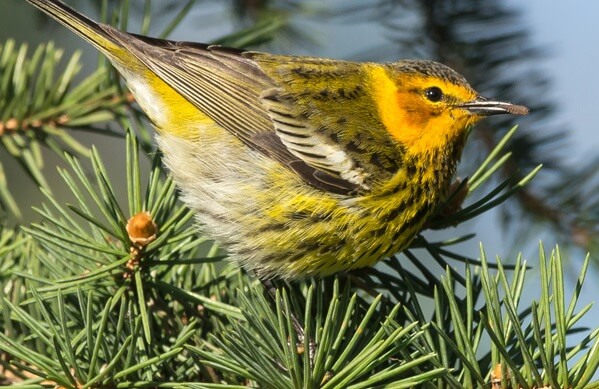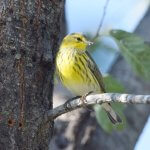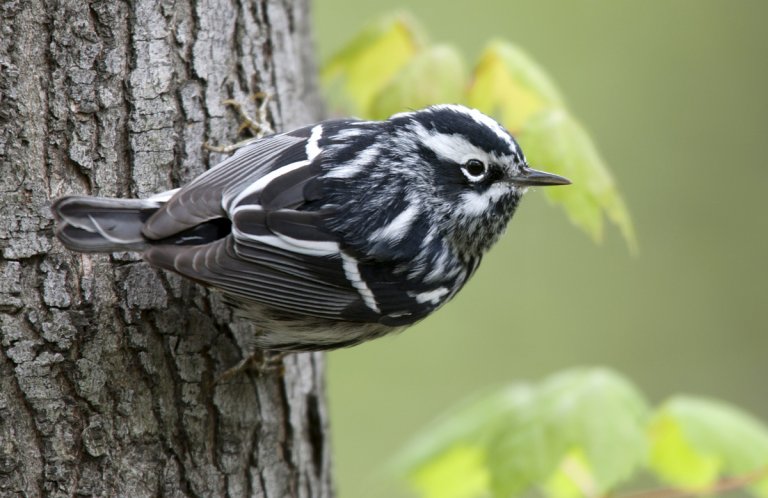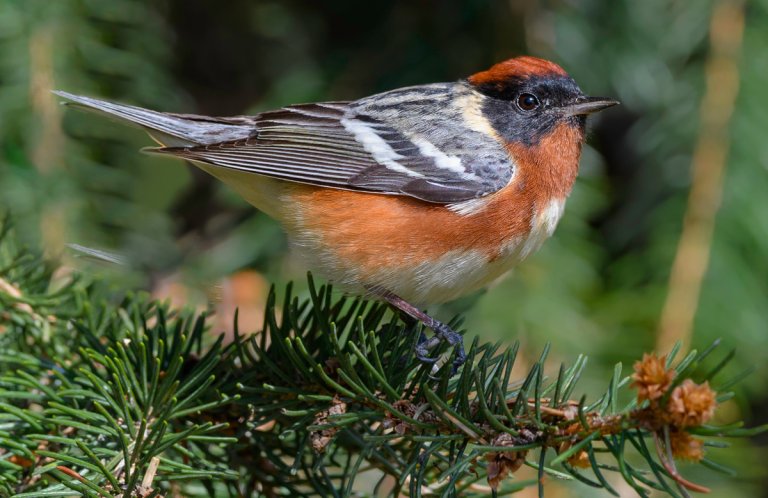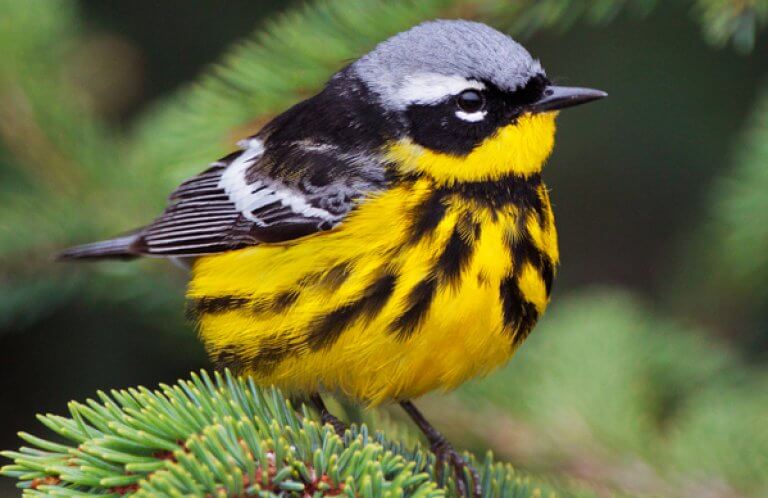About the Cape May Warbler
One of those many birds with a puzzling common name, the Cape May Warbler doesn't spend much time in its namesake locale. Instead, Cape May, New Jersey is the place where famed ornithologist Alexander Wilson first described this eye-catching species. As with Magnolia Warbler — named for its fleeting presence in a magnolia tree — the place where the bird was first recorded made for an inaccurate name.
The Cape May Warbler's Latin name, tigrina, is a far more accurate way to describe it, especially the vividly tiger-striped male. (Females and juveniles are also striped, but in more subdued colors.)
Songs and Sounds
Breeding males stake out their territories with thin, high-pitched songs that are a challenge for many people to hear.
(Audio: Andrew Spencer, XC181946.)
Breeding and Feeding
Tubular Tongue
Cape May Warblers have a curled, semi-tubular tongues that allows the birds to switch to a diet of nectar and juices during the winter. In the manner of Hawaiian honeycreepers such as ‘Anianiau and ʻApapane, Cape Mays use their sharp, narrow bills to pierce flowers and fruit, then sip the nectar. They will also drink sap from sapsucker wells.
Although Cape May Warblers feed on insects during the winter, flowering plants are an additional and essential winter habitat requirement for this and other migratory birds, such as Ruby-throated Hummingbird.

Region and Range
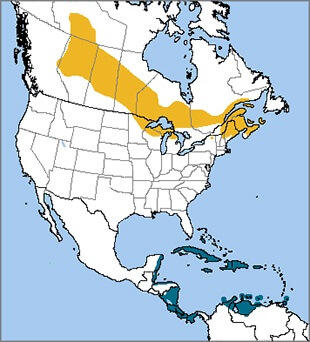
Spruce Budworm Specialist
Cape May Warblers summer in the boreal forests of North America, where an estimated 83 percent of the global population breeds. Like Bay-breasted and Blackpoll Warblers, this bird is known a "spruce budworm specialist," as its numbers fluctuate with outbreaks of that insect.
Cape Mays spend the winter mainly in the Caribbean but also in Central America, where they often join mixed-species feeding flocks alongside other neotropical migrants such as American Redstart and Black-and-white Warbler.
Conservation
Habitat loss — especially of mature spruce trees — is the biggest threat to this bird. Aerial insecticide spraying to control spruce budworms, an important food source during the summer, can cause steep population declines. High numbers of Cape Mays also fall victim to tower collisions and cats during their annual migrations.

Help support ABC's conservation mission!
Cape May Warbler is classified as a Watch List species by Partners in Flight because of its steep population declines. The Boreal Songbird Initiative is working to recover these numbers by protecting large areas of this bird's breeding habitat.
ABC is also working to protect migratory birds throughout their life-cycles through our BirdScapes approach to conservation, a large-scale effort to “bring back the birds.” This work includes programs to identify and conserve essential habitat on wintering grounds and stopover sites, such as the Santa Marta Mountains of Colombia, for a suite of birds that includes Blackburnian Warbler and Gray-cheeked Thrush.
Get Involved
Policies enacted by the U.S. Congress and federal agencies, such as the U.S. Fish and Wildlife Service, have a huge impact on migratory birds. You can help shape these rules for the better by telling lawmakers to prioritize birds, bird habitat, and bird-friendly measures. To get started, visit ABC's Action Center.
Living a bird-friendly life can have an immediate impact on migratory birds in the United States. Doing so can be as easy as adding native plants to your garden, avoiding pesticides, and keeping cats indoors. To learn more, visit our Bird-Friendly Life page.
American Bird Conservancy and our Migratory Bird Joint Venture partners have improved conservation management on more than 6.4 million acres of U.S. bird habitat — an area larger than the state of Maryland — over the last ten years. That's not all: With the help of international partners, we've established a network of more than 100 areas of priority bird habitat across the Americas, helping to ensure that birds' needs are met during all stages of their lifecycles. These are monumental undertakings, requiring the support of many, and you can help by making a gift today.





































